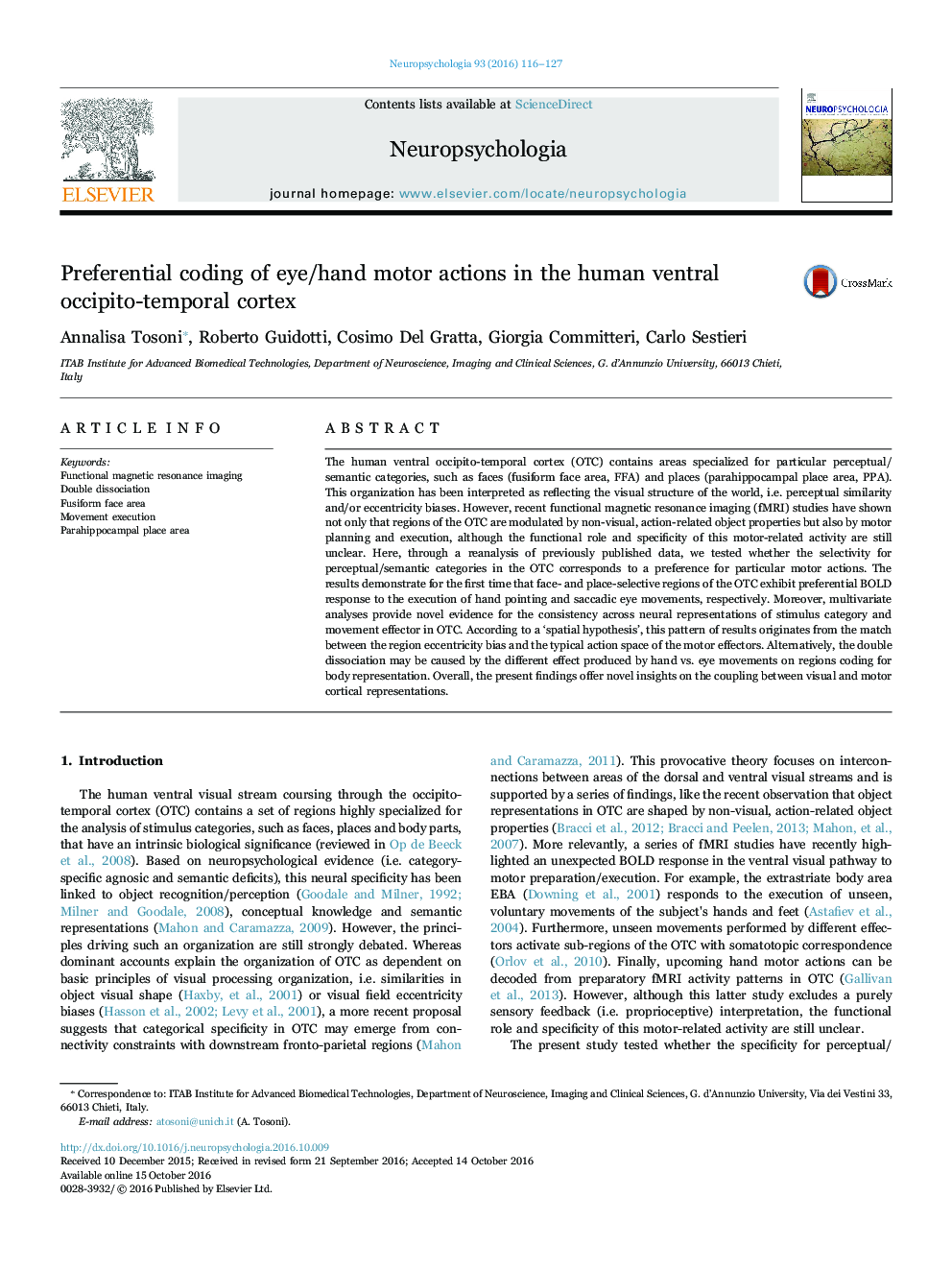| کد مقاله | کد نشریه | سال انتشار | مقاله انگلیسی | نسخه تمام متن |
|---|---|---|---|---|
| 5045320 | 1370661 | 2016 | 12 صفحه PDF | دانلود رایگان |
- Category-specific regions of the OTC show robust BOLD motor-related activity.
- Face-selective regions show preferential response to hand than eye movements.
- Place-selective regions show preferential response to eye than hand movements.
- This double dissociation may be related to action space or body representation.
- Stimulus category and movement effector may share a common neural representation.
The human ventral occipito-temporal cortex (OTC) contains areas specialized for particular perceptual/semantic categories, such as faces (fusiform face area, FFA) and places (parahippocampal place area, PPA). This organization has been interpreted as reflecting the visual structure of the world, i.e. perceptual similarity and/or eccentricity biases. However, recent functional magnetic resonance imaging (fMRI) studies have shown not only that regions of the OTC are modulated by non-visual, action-related object properties but also by motor planning and execution, although the functional role and specificity of this motor-related activity are still unclear. Here, through a reanalysis of previously published data, we tested whether the selectivity for perceptual/semantic categories in the OTC corresponds to a preference for particular motor actions. The results demonstrate for the first time that face- and place-selective regions of the OTC exhibit preferential BOLD response to the execution of hand pointing and saccadic eye movements, respectively. Moreover, multivariate analyses provide novel evidence for the consistency across neural representations of stimulus category and movement effector in OTC. According to a 'spatial hypothesis', this pattern of results originates from the match between the region eccentricity bias and the typical action space of the motor effectors. Alternatively, the double dissociation may be caused by the different effect produced by hand vs. eye movements on regions coding for body representation. Overall, the present findings offer novel insights on the coupling between visual and motor cortical representations.
Journal: Neuropsychologia - Volume 93, Part A, December 2016, Pages 116-127
